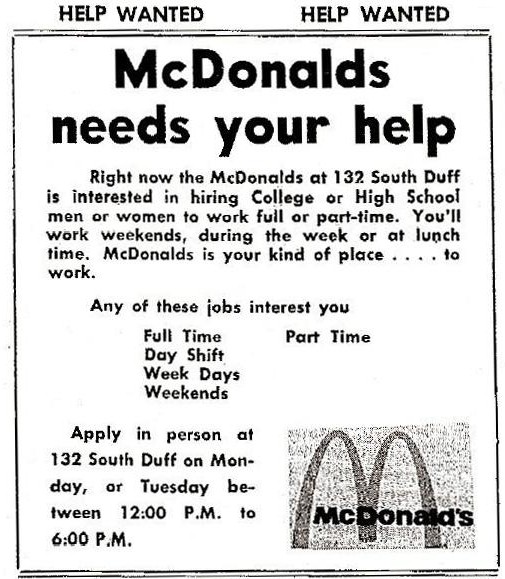I'm not a user of Snapchat. Mainly because I am an adult, I was never able to figure it out the two or three times my HR Happy Hour partner Trish McFarlane tried to explain it to me, and also because I am an adult.
While 'maturing' as a platform, (I bet following the same pattern as Facebook, as the parents of the pre-teens, teens, and young adults who were the primary users of the network are 'forced' to sign up in order to keep and eye on what their kids are up to online), Snapchat is still by and large an app/social network predominantly used by people under 34. And this totally fine. I personally don't get it, and I look a little side-eyed when a 46 year old man asks if I 'Snap', but at the same time I totally understand why a 17 year-old would be on Snap all day long. That same 17 year-old would laugh at LinkedIn the same way I scoff at Snapchat.
I thought about this after reading a piece on Business Insider about McDonald's plans to use Snapchat, in the form of something they call a 'Snaplication' as a launch point in the recruiting process that has a goal of hiring about 250,000 new employees this summer.
The basic idea is that an interested candidate would log in to Snapchat, find the McDonald's careers 'page' or account or whatever it is you call such a thing on Snapchat, and view a 10-second video from McDonald's employees. The version of the process in Australia also allows candidates to record their own 10 second 'Snaplication' to send to McDonald's. From there, the app allows the candidates (via a swipe) to launch an actual job application process in the app.
Sounds really cool and innovative, if a little cheeky. But I do applaud McDonald's for pushing the technology and candidate engagement envelope with this initiative. They (probably rightly), see that users of smart phones, (just about everyone), and who also use Snapchat, (probably lots and lots of people from 16 - 30), line up pretty well with their typical or targeted employee profile.
But what I worried about when I read the story, (and after I stopped rolling my eyes at the concept of a 'Snaplication'), is that this kind of a 'front door' to the recruiting process would almost certainly screen out a pretty significant cohort of potential applicants who don't use Snapchat, would have no clue how to figure out how to send a 'Snaplication', and rather than try and figure it out, would just walk next door to Chick fil-A to apply there. That cohort would be made up of mostly older people, folks like me for example.
And if you were surprised to learn that a 'Snaplication' is a thing, you might also be surprised to learn that on average, fast-food workers are getting older too. There are a few different sources of this kind of data, and the numbers are not all consistent, but this example from the BLS suggests that median age of all food service workers is about 30. And I bet if you hit up a McDonald's for your McMuffin and coffee fix this morning you are likely to finds as many 30+ folks working the counter and grill as you are the more typical Snapchatter.
Now I know that you don't 'have' to use Snapchat to apply for a job at McDonald's, and the traditional methods that older candidates would be more familiar with are still available, but that is not really the point.
The point is that every decision an organization makes about how it will find, attract, and engage candidates has an impact on the organization in the long run, particularly its diversity and inclusiveness.
Pushing 'Snaplications' will drive more applicants from a certain, younger demographic, just like working an on-campus recruiting event at the University of Pick Your State will drive more applicants from that particular school's demographic. Running targeted job ads on any website or social network also (by design), shapes, influences, and limits the candidates you are likely to attract.
None of this is new thinking, smart HR and recruiting folks know this for sure. But I am not sure candidates do.
Or said differently, when I read about the 'Snaplication' program, the first thing I thought of was that there's no way I would ever do that. And that is ok I suppose, as I probably would not be applying to McDonald's anyway.
But I bet there are at least some, maybe quite a few actually, interested and desirable candidates that McDonald's might be turning off with a program like this. And the real lesson is that we all need to be really careful and considerate about how the places, methods, requirements, and technologies that we use in the candidate attraction and application process can have downstream impacts on the organization overall.
'Snaplications' sound dumb. But they matter. All the choices we make that impact who we bring in to the organization matter.
Have a great week!

 Steve
Steve
